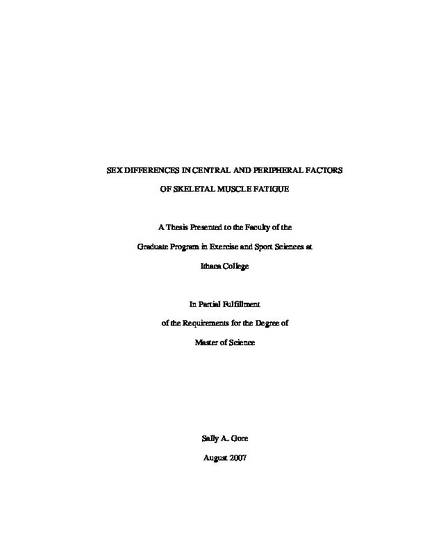
Women generally exhibit greater fatigue resistance than men, due in part to differences in muscle mass. Less muscle mass in women results in decreased oxygen demand and increased oxygen delivery at the same relative workload compared to men and yields greater endurance. The purpose of this study was to examine sex differences in muscle fatigue between male and female athletes matched for muscle mass. Twenty four males and females were tested and yielded eight male-female pairs matched for age, training history and thigh muscle volume. Thigh muscle volume was estimated via circumference and skinfold measurements using the truncated cone method. Mean difference in thigh muscle volume between subjects within each pair was 2.13 ml (SD = 2.25). Strength was measured as maximum voluntary contraction (MVC), determined by superimposing an electrical stimulus at 3x threshold (26-pulse, 100-Hz, 250-ms train) while subjects performed a 5-second maximum isometric contraction on a Cybex&#; dynamometer. Central activation ratio (CAR = MVC / MVC + electrical stimulation) was calculated to insure maximum motor unit recruitment. Subjects then completed a fatigue protocol of intermittent, 5-second sustained isometric leg extension at 50% of initial MVC with alternating 5-second rest periods until exhaustion. At termination, a final 5-second MVC was performed with superimposed electrical stimulation and CAR was calculated to quantify the contribution of central factors to fatigue. Sex differences in time to fatigue, rate of fatigue, percent of initial strength at fatigue, and CAR were assessed with paired t-tests. There were no significant differences within matched pairs for time to fatigue, rate of fatigue, or percent of initial strength. There was no significant difference in CAR. The results of this study suggest that the greater fatigue resistance typically observed in females is probably due to differences in muscle mass.
Available at: http://works.bepress.com/sally_gore/1/
